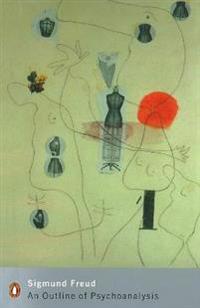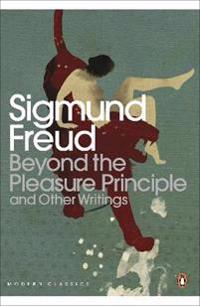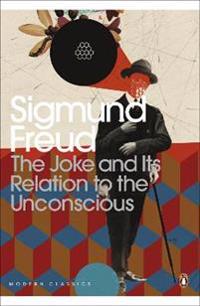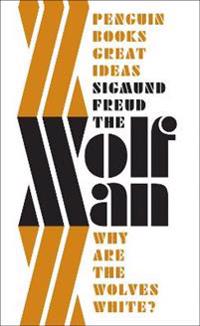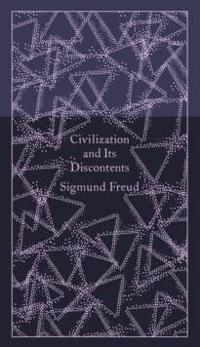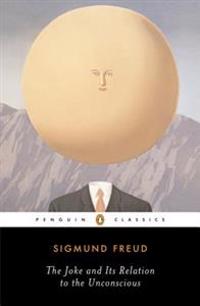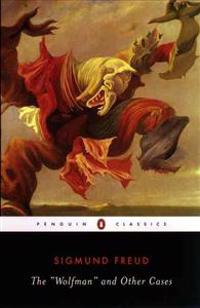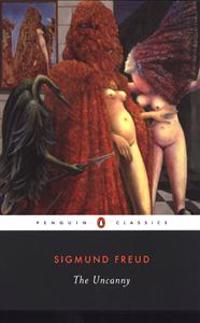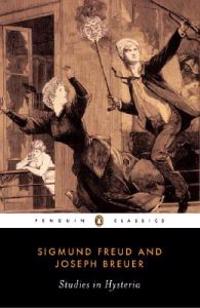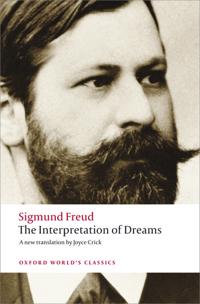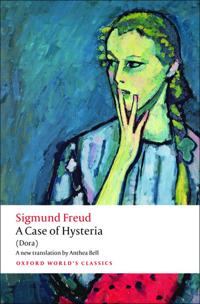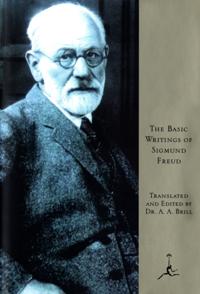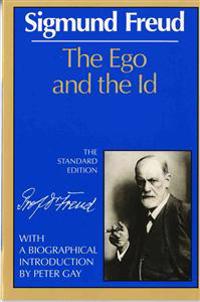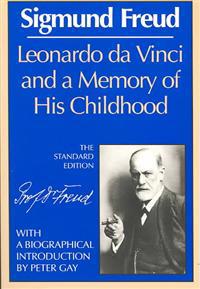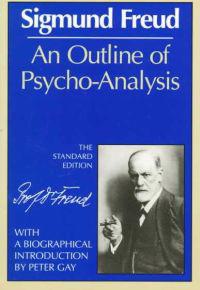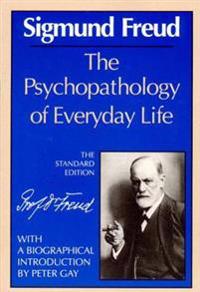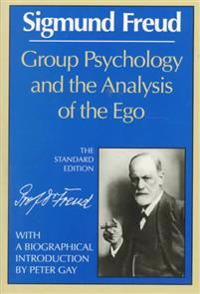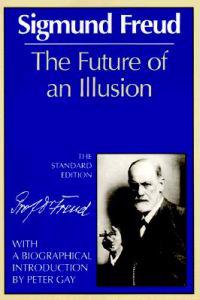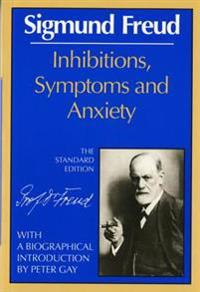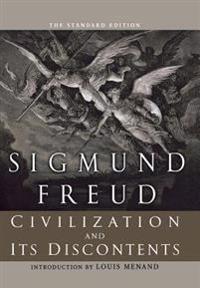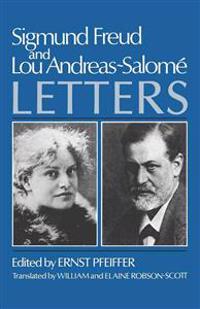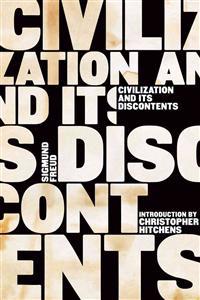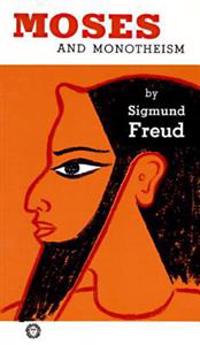An Outline of Psychoanalysis (Storpocket)
avSigmund Freud
ISBN: 9780141184043 - UTGIVEN: 2003-07This title is one of fifteen volumes in the new Freud series commissioned for Penguin by series editor Adam Phillips. It is part of a plan to generate a new, non-specialist Freud for a wide readership, which goes way beyond the institutional/clinical market and presents material to the reader in a n[...]
Beyond the Pleasure Principle (Storpocket)
avSigmund Freud
ISBN: 9780141184050 - UTGIVEN: 200307A collection of some of Freud's most famous essays, including "On The Introduction of Narcissism", "Remembering, Repeating and Working Through", "Beyond the Pleasure Principle", "The Ego and the ID" and "Inhibition, Symptom and Fear".[...]
The Joke and Its Relation to the Unconscious (Storpocket)
avSigmund Freud
ISBN: 9780141185545 - UTGIVEN: 200211Building on the crucial insight that jokes use many of the same mechanisms he had already discovered in dreams, Freud developed one of the richest and most comprehensive theories of humor that has ever been produced. Jokes, he argues, provide immense pleasure by allowing us to express many of our de[...]
The 'Wolfman' (Häftad)
avSigmund Freud
ISBN: 9780141192208 - UTGIVEN: 201008This is Freud's groundbreaking study of a wealthy young Russian man, subject to psychotic episodes and neuroses. Through the patient's dream of childhood wolves, Freud was able to determine his real problem - that of infantile neurosis brought about by a sexual complex and an Oedipal fixation. "Grea[...]
Civilization And Its Discontents (Inbunden)
avSigmund Freud
ISBN: 9780141395890 - UTGIVEN: 2014-10Written in the decade before Freud s death, Civilization and Its Discontents may be his most famous and most brilliant work. It has been praised, dissected, lambasted, interpreted, and reinterpreted. Originally published in 1930, it seeks to answer several questions fundamental to human society and [...]
The Joke and Its Relation to the Unconscious (Häftad)
avSigmund Freud, John Carey
ISBN: 9780142437445 - UTGIVEN: 200306Why do we laugh? The answer, argued Freud in this groundbreaking study of humor, is that jokes, like dreams, satisfy our unconscious desires. The Joke and Its Relation to the Unconscious explains how jokes provide immense pleasure by releasing us from our inhibitions and allowing us to express sexua[...]
The "Wolfman" and Other Cases (Häftad)
avSigmund Freud
ISBN: 9780142437452 - UTGIVEN: 200306When a disturbed young Russian man came to Freud for treatment, the analysis of his childhood neuroses--most notably a dream about wolves outside his bedroom window--eventually revealed a deep-seated trauma. It took more than four years to treat him, and "The Wolfman" became one of Freud's most famo[...]
The Uncanny (Häftad)
avSigmund Freud, Adam Phillips
ISBN: 9780142437476 - UTGIVEN: 200309Freud was fascinated by the mysteries of creativity and the imagination. The groundbreaking works that comprise "The Uncanny" present some of his most influential explorations of the mind. In these pieces Freud investigates the vivid but seemingly trivial childhood memories that often "screen" deepl[...]
Studies in Hysteria (Häftad)
avSigmund Freud, Joseph Breuer
ISBN: 9780142437490 - UTGIVEN: 200406Hysteria--the tormenting of the body by the troubled mind--is among the most pervasive of human disorders; yet, at the same time, it is the most elusive. Freud's recognition that hysteria stemmed from traumas in the patient's past transformed the way we think about sexuality. Studies in Hysteria is [...]
The Interpretation of Dreams (Häftad)
avSigmund Freud
ISBN: 9780199537587 - UTGIVEN: 200808This groundbreaking new translation of The Interpretation of Dreams is the first to be based on the original text published in November 1899. It restores Freud's original argument, unmodified by revisions he made following the book's critical reception which included, under the influence of his ass[...]
A Case of Hysteria (Häftad)
avSigmund Freud
ISBN: 9780199639861 - UTGIVEN: 2013-04'I very soon had an opportunity to interpret Dora's nervous coughing as the outcome of a fantasized sexual situation.' A Case of Hysteria, popularly known as the Dora Case, affords a rare insight into how Freud dealt with patients and interpreted what they told him. The 18-year-old 'Dora' was sent [...]
Basic Writings of Sigmund Freud
ISBN: 9780307824011 - UTGIVEN: 2015-06This classic edition of The Basic Writings of Sigmund Freud includes complete texts of six works that have profoundly influenced our understanding of human behavior. The Basic Writings of Sigmund Freud is presented here in the translation by Dr. A. A. Brill, who for almost forty years was the sta[...]
The Ego and the Id (Pocket)
avSigmund Freud, James Strachey, Peter Gay
ISBN: 9780393001426 - UTGIVEN: 196204Presents Freud's psychoanalytical treatise on the divisions of the mind and their interrelations
Jokes and Their Relation to the Unconscious (Pocket)
avSigmund Freud
ISBN: 9780393001457 - UTGIVEN: 1963-06-01Leonardo Da Vinci and a Memory of His Childhood (Häftad)
avSigmund Freud, James Strachey
ISBN: 9780393001495 - UTGIVEN: 199001.
An Outline of Psycho-Analysis (Pocket)
avSigmund Freud, James Strachey, Peter Gay
ISBN: 9780393001518 - UTGIVEN: 198910Freud approved the overall editorial plan, specific renderings of key words and phrases, and the addition of valuable notes, from bibliographical and explanatory. Many of the translations were done by Strachey himself; the rest were prepared under his supervision. The result was to place the Standar[...]
The Psychopathology of Everyday Life (Inbunden)
avSigmund Freud
ISBN: 9780393006117 - UTGIVEN: 1971-04Along with the "Introductory Lectures on Psycho-Analysis, " the present text remains one of Freud's most widely read. It is filled with anecdotes, many of them quite amusing, and virtually bereft of difficult technical terminology. And Freud put himself on the line: numerous acts of willful forgetti[...]
Beyond the Pleasure Principle (Häftad)
avSigmund Freud, James Strachey, Peter Gay
ISBN: 9780393007695 - UTGIVEN: 199004.
Group psychology and the analysis of the ego (Pocket)
avSigmund Freud, Peter (INT) Gay, James (EDT) Strachey
ISBN: 9780393007701 - UTGIVEN: 1975-02The question he addresses here is, What are the emotional bonds that hold collective entities, such as an army and a church, together? It is a fruitful question, and Freud offers some interesting answers. But Group Psychology and the Analysis of the Ego stands chiefly as an invitation to further psy[...]
The Future of an Illusion (Häftad)
avSigmund Freud, James Strachey, Peter Gay
ISBN: 9780393008319 - UTGIVEN: 198909.
Inhibitions, Symptoms and Anxiety (Pocket)
avSigmund Freud, Peter Gay, James Strachey
ISBN: 9780393008746 - UTGIVEN: 197711On three or four occasions in his career as a psychoanalytic theoretician, Freud changed his mind on fundamental issues. Setting forth in rich detail Freud's new theory of anxiety, Inhibitions, Symptoms and Anxiety (1926) is evidence for one of them. In rethinking his earlier work on the subject, Fr[...]
Civilization And Its Discontents (Inbunden)
avSigmund Freud, James Strachey, Peter Gay
ISBN: 9780393059953 - UTGIVEN: 200501Civilization and Its Discontents may be Sigmund Freud's best-known work. Originally published in 1930, it seeks to answer ultimate questions: What influences led to the creation of civilization? How did it come to be? What determines its course? In this seminal volume of twentieth-century thought, F[...]
Sigmund Freud and Lou Andreas-Salomae, Letters (häftad)
ISBN: 9780393302615 - UTGIVEN: 1985-11Lou Andreas-Salome (1861-1937) was a writer and disciple of Freud who became a practicing analyst. For over two decades she and Freud kept up an intensive correspondence. Freud found in her a perceptive appreciater and amplifier of his ideas, and Frau Andreas found him a sympathetic critic of her ow[...]
Civilization and Its Discontents (Häftad)
avSigmund Freud
ISBN: 9780393304510 - UTGIVEN: 201008Freud's seminal volume of twentieth-century cultural thought grounded in psychoanalytic theory, now with a new introduction by Christopher Hitchens. Written in the decade before Freud's death, Civilization and Its Discontents may be his most famous and most brilliant work. It has been praised, disse[...]
Moses and Monotheism (Pocket)
avSigmund Freud
ISBN: 9780394700144 - UTGIVEN: 196706Freud's speculations on various aspects of religion where he explains various characteristics of the Jews in their relations with the Christians.[...]

